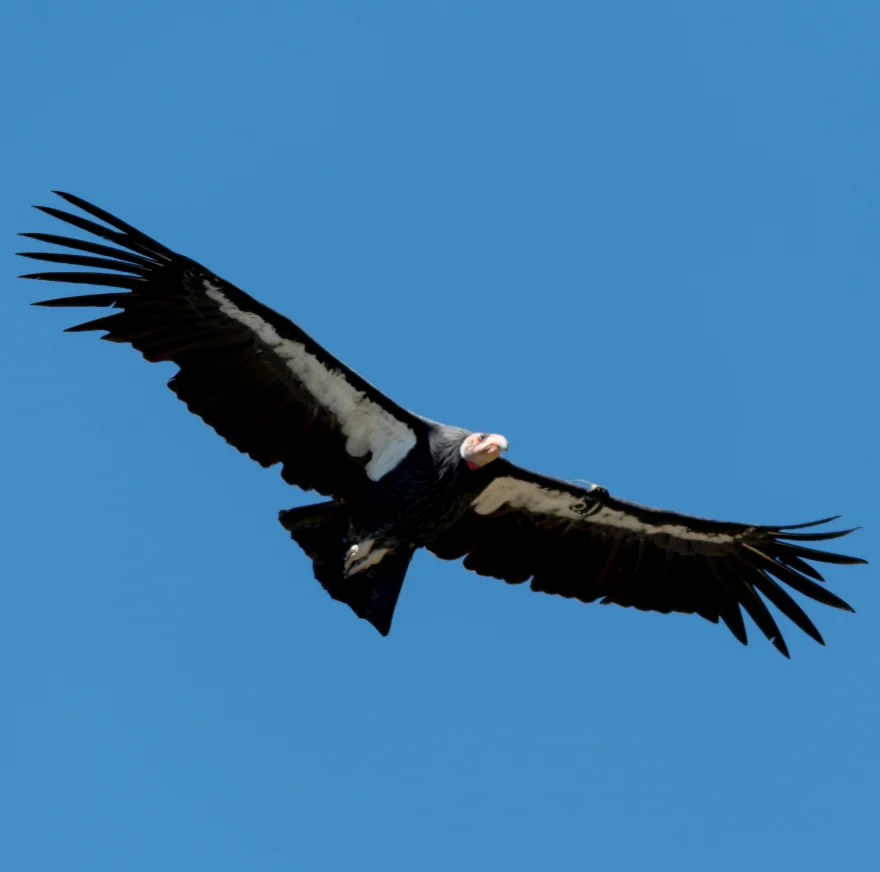Birds are some of the greatest fliers in the animal world. Their wings are wonderfully engineered for airborne movement. Being small also helps with flight, and most birds aren’t very big. However, there are some exceptions to the rule, some absolute units. But what bird has the largest wingspan? And how can they make that work?
Let’s find out in this Naturalist Answers post.
Wingspan 101

A birds’ wingspan is the total distance between its wingtips when both wings are fully extended. If you’ve got a friend handy, you can measure your own wingspan. That would be the distance between the tips of your longest fingers when you’re holding both arms straight out from your shoulders to either side.
Why is wingspan important for birds? For starters, longer wings mean bigger wings. In other words, wings that are longer will typically also have a larger surface area. This means that they have more surface to act as an airfoil, providing the lift that is necessary for flight. The larger and heavier the bird, the more lift needed to keep it in the air. As a result, bigger birds need to have bigger wings if they want to fly.

Secondly, longer wings are better for gliding. If you’ve ever compared a powered airplane like a fighter jet to a glider, you may have noticed this difference. While very long wings are not great for maneuverability or speed, they can easily sustain flight for a long time. This is why fast-moving birds like falcons, swifts, and swallows have relatively short wings. By contrast, birds like vultures that need to travel big distances without spending much energy have very long wings.
The winner
It would be unfair to hold out on the answer for the whole post, so let’s get right to it. The extant bird species with the largest wingspan on Earth is the wandering albatross (Diomedea exulans). This incredible animal can have a total wingspan of up to 12 feet (3.7m) among the largest individuals!
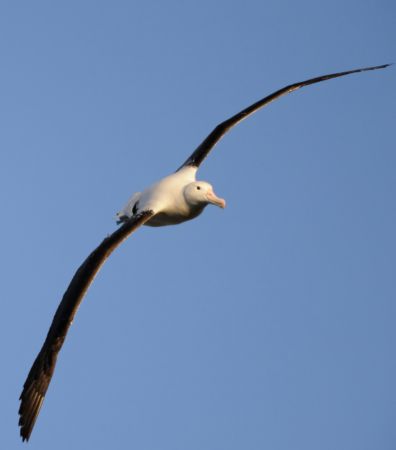
Albatrosses belong to the bird family Diomedeidae which are large-bodied seafaring birds that roam the world’s oceans. They are what scientists call pelagic birds, meaning that they spend most of their lives far out at sea. There, they snatch squid and small fish from the water’s surface to make a living.
As you might guess, the oceans are a big place. In fact, they make up about 71% of the Earth’s surface! Especially nowadays, you won’t find fish in every square inch of it, either. Albatross have to, well, wander for their food! This means that, just like glider planes, albatrosses need to be able to cover a lot of ground without using much energy.
The science behind what bird has the largest wingspan
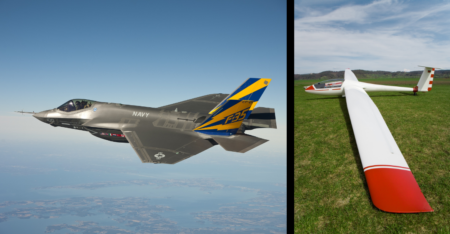
The albatross’ lifestyle, and their unique adaptations do it, are precisely the reason why they have such preposterously large wingspans. Specifically, long, thin wings have more surface area for gliding. Because of this, it’s easier for birds like albatrosses to keep flying without needing to flap their wings for power. This longer airfoil helps maintain the flow of air over the wing and keep the bird aloft.
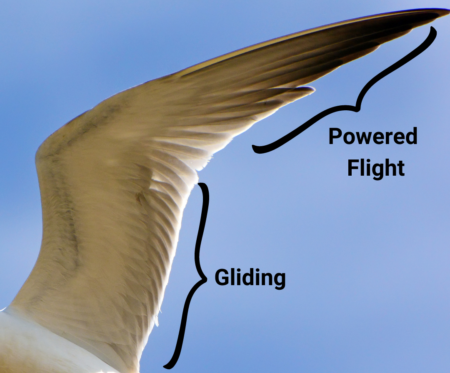
This is especially true over the water, where tiny bits of air turbulence are constantly breaking over the waves. By riding low over the water birds with longer wings like albatrosses can take advantage of these air movements and get a free ride! This is closely related to the benefits that birds get from flying in a V formation.
Runners-up
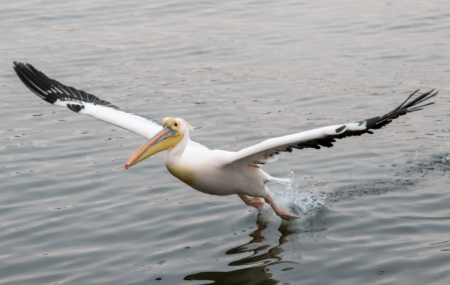
It’s also worth acknowledging that the wandering albatross isn’t the only living bird species with absolutely monstrous wings. Here are some other absolute units:
- Great white pelican (Pelecanus onocrotalus), 11.8ft (3.6m)
- Southern royal albatross (Diomedea epomophora), 11.5ft, (3.5m)
- Andean condor (Vultur gryphus), 11ft (3.3m)
- Marabou stork (Leptoptilos crumenifer), 10ft (3.2m)
You may notice that all of these birds are either wave-cruising ocean-liners like the wandering albatross, or scavengers. Just like pelagic birds, scavengers like storks, condors, and vultures have to fly long distances in source of carrion (dead animals) to eat. Similarly, their wings are adapted to be highly efficient for gliding flight. As a result, they too have really long wings to take advantage.
While they don’t have ocean waves to generate air, they use rising columns of warm air called thermals that occur on warm, sunny days. They will use these like air-elevators to get to cruising altitude and then take a free ride around their domain.
What bird has the largest wingspan of all time?
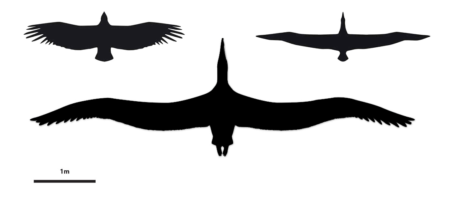
You may have noticed that I was very specific about the albatross having the largest wingspan of any living bird. There was a reason for this! Namely, that quite a few extinct birds had even more massive wingspans.
A bird called Pelagornis sandersi may have had a wingspan up to 21 feet (6.4m). That’s twice the size of the largest wingspan of any living bird today. P. sandersi belonged to the ancient and extinct order Odontopterygiformes, which, unlike modern birds, had “teeth”. Actually known as pseudo-teeth, these toothlike projections of the bill functioned much like mammalian teeth. The only fossilized specimen recovered for this species is around 25 million years old.
Just like many of our modern day long-winged gliders, P. sandersi was probably pelagic and spent its time cruising ancient oceans.
Thanks for reading what bird has the largest wingspan!
Have you ever come across a massive-winged soaring bird on your outdoor adventures? Let us know in the comments! If you’d got other naturalists questions burning at your mind, don’t hesitate to connect via social media or the Contact page.

